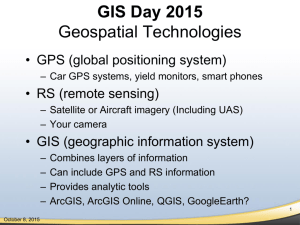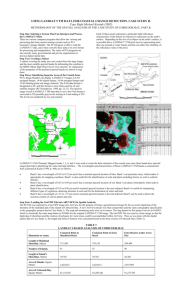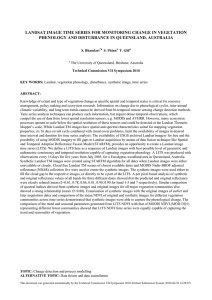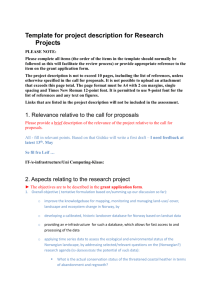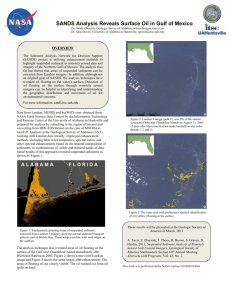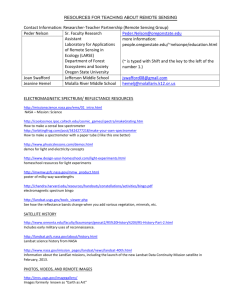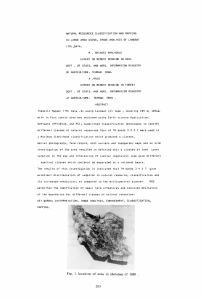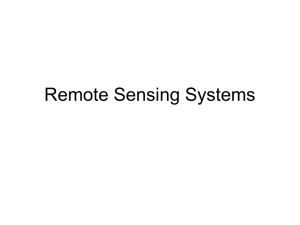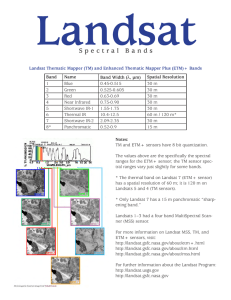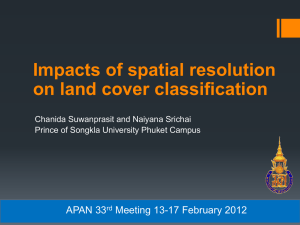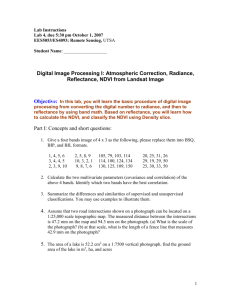Resources Hurricane Katrina analyzed using VSW index SOM
advertisement
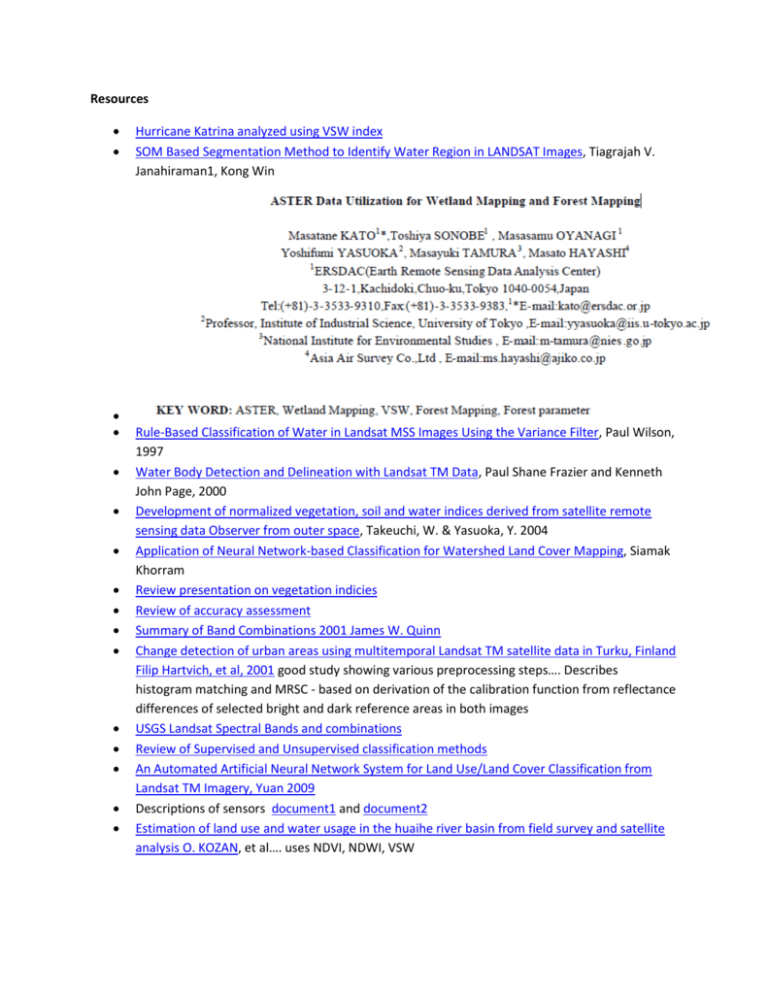
Resources Hurricane Katrina analyzed using VSW index SOM Based Segmentation Method to Identify Water Region in LANDSAT Images, Tiagrajah V. Janahiraman1, Kong Win Rule-Based Classification of Water in Landsat MSS Images Using the Variance Filter, Paul Wilson, 1997 Water Body Detection and Delineation with Landsat TM Data, Paul Shane Frazier and Kenneth John Page, 2000 Development of normalized vegetation, soil and water indices derived from satellite remote sensing data Observer from outer space, Takeuchi, W. & Yasuoka, Y. 2004 Application of Neural Network-based Classification for Watershed Land Cover Mapping, Siamak Khorram Review presentation on vegetation indicies Review of accuracy assessment Summary of Band Combinations 2001 James W. Quinn Change detection of urban areas using multitemporal Landsat TM satellite data in Turku, Finland Filip Hartvich, et al, 2001 good study showing various preprocessing steps…. Describes histogram matching and MRSC - based on derivation of the calibration function from reflectance differences of selected bright and dark reference areas in both images USGS Landsat Spectral Bands and combinations Review of Supervised and Unsupervised classification methods An Automated Artificial Neural Network System for Land Use/Land Cover Classification from Landsat TM Imagery, Yuan 2009 Descriptions of sensors document1 and document2 Estimation of land use and water usage in the huaihe river basin from field survey and satellite analysis O. KOZAN, et al…. uses NDVI, NDWI, VSW Monitoring Urban Space Expansion Using Remote Sensing Data in Ha Long City, Quang Ninh Province in Vietnam MY Vo Chi, LAN Pham Thi, SON Tong Si, VietNam VSW index, urban expansion, supervised classification Water Body Detection and delineation with Landsat TM Data, Frazier and Page … “The infrared bands all display a bi-modal histogram with a darker mode consisting mostly of water pixels. The density slice ranges for band 5 and band 7 start at near zero, meaning that water pixels are the darkest in the image. The range for each of these bands slightly overlaps with the largest mode in the histogram. The density slice range of 14 to 66 for band 4 does not account for all of the pixels in the smaller darker mode and significantly overlaps with the darker edge of the main pixel mode.” Modelling spatial-temporal change of Poyang Lake using multitemporal Landsat imagery FENGMING HUI et al, NDWI, MNDWI Measuring Water Clarity and Quality in Minnesota Lakes and Rivers: A Census-Based Approach Using Remote-Sensing Techniques by Patrick L. Brezonik, Leif G. Olmanson, Marvin E. Bauer, and Steven M. Kloiber The general predictive equation that we found for water clarity estimation has the form: ln(SD) = a(TM1/TM3) + b(TM1) + c where a, b, and c are coefficients fit to the calibration data by the regression analysis, ln(SD) is the natural logarithm of the Secchi depth for a given lake, and TM1 and TM3 are the brightness values measured by the Landsat sensor in the blue and red bands, respectively, for a pre-defined area of the lake surface. Once coefficients have been fitted to the equation, it can be used to infer Secchi depth values for all other lakes in the Landsat image Determination of Flood Extent Using Remote Sensing, Md. Zahidul Islam “It was found that on the TM 5 and TM 7 (2.08-2.35 μm) image the reflectance of water, paved roof surfaces and rooftops are different. But the differences are slightly smaller in TM 5 than those are in TM 7. So the addition of TM 4 and TM 7 (TM 4+TM 7) will be useful for determining water verses non water area. So if the reflectance of a pixel is low in TM 4+TM 7 image the pixel is considered as water, otherwise it will represented as non water” Evaluation of MODIS NDVI and NDWI for vegetation drought monitoring using Oklahoma Mesonet soil moisture data Yingxin Gu et al USGS Sensor Data Normalization methods presentation includes: A. at-sensor reflectance Corrections for: (a) sensor degradation\changes, (b) solar elevation, (c) band-width (spectrum at which irradiance is received), (c) Earthsun distance. B. Surface reflectance Corrections for atmospheric effects: (a) cloud removal\composite, (b) haze removal. C. Inter-sensor Calibrations Corrections for: (a) pixel resolution (e.g., 30m vs. 80m), (b) band width (e.g., broad-band vs. narrow-band), (c) radiometer (e.g., 8-bit vs. 11-bit). Review of PREPROCESSING METHODS Review of Atmospheric, Topographic preprocessing methods
